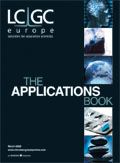Identification of Psychotropic Substances in Mushrooms by UHPLC–MS
The Application Notebook
Forensic laboratories face a daunting task to identify trace amounts of controlled substances in small samples of seized evidence. Unambiguous identification is required to meet the stiff challenge that is sure to be raised in the courtroom. Positive proof is especially difficult to establish if the controlled substance is hidden in a complex food matrix with a high content of sugars, fats, fatty acids, proteins and alkaloids.
Jason R. Stenzel1 and Guifeng Jiang,2 1Washington State Patrol, Crime Laboratory Division, Cheney, Washington, USA, 2 Thermo Fisher Scientific, San Jose, California, USA.
Forensic laboratories face a daunting task to identify trace amounts of controlled substances in small samples of seized evidence. Unambiguous identification is required to meet the stiff challenge that is sure to be raised in the courtroom. Positive proof is especially difficult to establish if the controlled substance is hidden in a complex food matrix with a high content of sugars, fats, fatty acids, proteins and alkaloids.
To meet this challenge ultra high pressure liquid chromatography–mass spectrometry (UHPLC–MS) is preferred when the analytes are nonvolatile, thermally labile, or when gas chromatography (GC) can only be used after multistep sample clean-ups.
This application note demonstrates how a working forensic laboratory uses UHPLC–MS to analyse seized evidence for illegal hallucinogens. Two compounds are targeted; psilocin and psilocybin. Psilocin is the main psychoactive compound, and psilocybin is enzymatically dephosphorylated in the body to produce psilocin. GC cannot readily differentiate psilocybin from psilocin because psilocybin is thermally labile and dephosphorylates at high temperature. UHPLC–MS offers the benefits of simpler sample prep and positive identification of intact psilocybin and psilocin.
Experimental Conditions
Standard and sample preparation
Psilocybin and psilocin standards (Alltech, State College, Pennsylvania, USA) were combined and diluted to 50 ppb with methanol. The psilocybin mushrooms were WSP training samples. A mixture of 2 mL methanol and 10 mg of dried mushroom was vortexed for 30 sec, filtered through a cotton-plugged Pasteur pipette, centrifuged for 90 sec, filtered through 0.45 μm nylon syringe filter and diluted 50-fold with methanol.
Results
Authentic mushroom samples were prepared as described above and the filtered extracts analysed by using UHPLC–MS. The peaks eluting at 0.64 and 2.22 min in Figure 1 were tentatively identified as psilocybin and psilocin by comparison with the retention time of standards. The peaks were confirmed as psilocybin and psilocin by comparing sample and reference mass spectra. Each spectrum showed the molecular ion (m/z 285 and m/z 205 for psilocybin and psilocin, respectively) and a distinctive fragmentation pattern.

Figure 1
Conclusion
UHPLC–MS can positively identify trace amounts of the hallucinogens psilocybin and psilocin in dried mushroom samples in 5 min, after a simple 10 min sample prep involving no chemical derivatization.

Thermo Fisher Scientific Inc.
355 River Oaks Parkway, San Jose, California 95134, USA
tel. +1 561 688 8900 fax +1 608 273 6880
E-mail: analyze@thermo.com
Website: www.thermo.com

Study Explores Thin-Film Extraction of Biogenic Amines via HPLC-MS/MS
March 27th 2025Scientists from Tabriz University and the University of Tabriz explored cellulose acetate-UiO-66-COOH as an affordable coating sorbent for thin film extraction of biogenic amines from cheese and alcohol-free beverages using HPLC-MS/MS.
Multi-Step Preparative LC–MS Workflow for Peptide Purification
March 21st 2025This article introduces a multi-step preparative purification workflow for synthetic peptides using liquid chromatography–mass spectrometry (LC–MS). The process involves optimizing separation conditions, scaling-up, fractionating, and confirming purity and recovery, using a single LC–MS system. High purity and recovery rates for synthetic peptides such as parathormone (PTH) are achieved. The method allows efficient purification and accurate confirmation of peptide synthesis and is suitable for handling complex preparative purification tasks.











